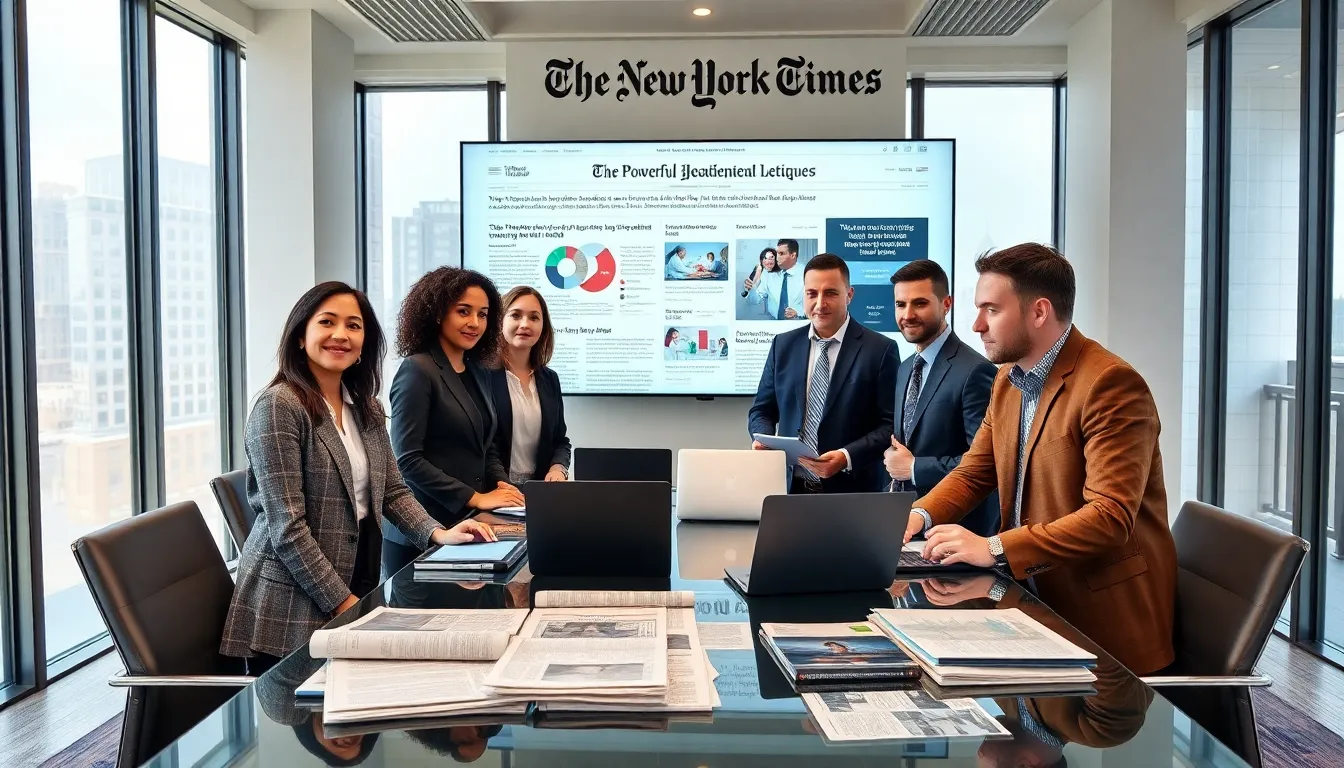Table of Contents
ToggleImagine flipping through the pages of the New York Times, sipping your coffee, and suddenly hitting a thought-provoking editorial that challenges everything you believe. Editorials in this iconic publication do just that, sparking conversations, debates, and even the occasional uproar. They’re more than just opinion pieces: they’re a reflection of societal values and a catalyst for change. In this text, we investigate into the intriguing realm of New York Times editorials, exploring their role, history, key themes, and the controversies that sometimes surround them. Buckle up, it’s going to be an enlightening ride.
The Role of Editorials in Journalism

Editorials serve as the moral compass in journalism, guiding readers through complex issues and providing insight into the publication’s stance. They don’t merely report the news: instead, they analyze and interpret events, offering readers a deeper understanding of the implications involving societal issues. By doing this, the New York Times fosters a more engaged and informed citizenry.
Besides, editorials serve to hold power accountable. They critique public policies and government actions while often advocating for change. This commitment to speaking truth to power is essential in democratic societies, where informed discussions can lead to constructive outcomes.
In an age of misinformation and rapid news cycles, the necessity of trusted editorial voices becomes even more apparent. The New York Times editorials encourage readers to think critically about the information they consume daily.
Historical Context of New York Times Editorials
The history of New York Times editorials dates back to the very founding of the newspaper in 1851. Amidst a landscape of yellow journalism, the Times was committed to integrity and truth. Early editorials often focused on emerging national issues, like the abolition of slavery and women’s suffrage.
Over the decades, the Times has taken bold stances on wars, civil rights, and social justice. One memorable moment occurred during World War II when editorials countered isolationist sentiments, advocating for American intervention.
As society evolved, so did the topics covered in editorials. Today, they discuss climate change, healthcare, and systemic inequalities, reflecting current events and societal shifts. This historical progression illustrates the editorial’s role not only as a commentary but as a listener of the public pulse.
Key Themes in New York Times Editorials
Prominent themes emerge from New York Times editorials, revealing the publication’s core values and societal concerns. Social justice is a consistent theme, with editorials challenging racism, sexism, and economic inequities. The Times has been a vocal advocate for the Black Lives Matter movement as well as LGBTQ+ rights, reflecting its commitment to representing marginalized voices.
Environmental stewardship is another crucial theme. With climate change posing an existential threat, editorials often tackle policy issues and advocate for sustainable solutions. The push for Green New Deal initiatives is one example.
Besides, the significance of democracy and human rights remains at the forefront. Editorials often critique authoritarian regimes and advocate for policies that bolster democratic governance and civil liberties both at home and abroad. These key themes underscore the Times’ role in promoting justice, environmental sustainability, and democratic values.
Influential Editorials and Their Impact
Throughout its history, New York Times editorials have sparked significant movements and influenced public opinion. For example, the Times’ endorsement of the civil rights movement in the 1960s helped shed light on racial injustices, contributing to widespread societal change. Similarly, in 2015, an editorial boldly stated that same-sex marriage should be recognized nationwide, signaling a shift that would eventually culminate in the Supreme Court’s ruling in favor of marriage equality.
In recent years, the publication’s editorials addressing the COVID-19 pandemic played a pivotal role in shaping public understanding of the virus and advocating for science-based policies. The call for lockdowns and vaccination campaigns has come from its pages, reinforcing the crisis’s urgency.
These examples illustrate that editorials can sway public discourse and policy, demonstrating the power of the written word in influencing societal change.
Criticism and Controversies Surrounding Editorials
Even though their influence, New York Times editorials have not been free from criticism. Some argue that the publication has a liberal bias, suggesting that its editorial stances do not always accurately reflect a balanced view. This perceived partiality leads critics to question the integrity of the editorial board.
Also, there have been instances where specific editorials generated backlash. The editorial endorsing a controversial police reform proposal sparked protests from communities advocating for defunding police altogether. This illustrates the delicate tightrope that editorial boards walk, balancing advocacy and diverse opinions.
Nonetheless, such controversies often ignite essential debates, underscoring the importance of public discourse in a democratic society. Constructive criticism can foster growth, pushing the Times to refine its approach and be a more responsive voice for its readership.
The Future of Editorials in the Digital Age
As digital media reshapes the landscape of journalism, the future of editorials appears both promising and challenging. With the proliferation of social media platforms, editorials can reach wider audiences and spark real-time discussions. This immediacy allows the New York Times to respond quickly to current events, ensuring their relevance in fast-paced news cycles.
Conversely, the digital age brings challenges such as information overload and rising misinformation. Readers may struggle to discern credible editorials amidst a sea of conflicting opinions. So, the Times’ commitment to factual reporting and accountability becomes even more critical.
In response, editorials could evolve by incorporating interactive formats, engaging readers through multimedia content. This evolution could enhance understanding and foster more profound connections between readers and the issues at hand.




